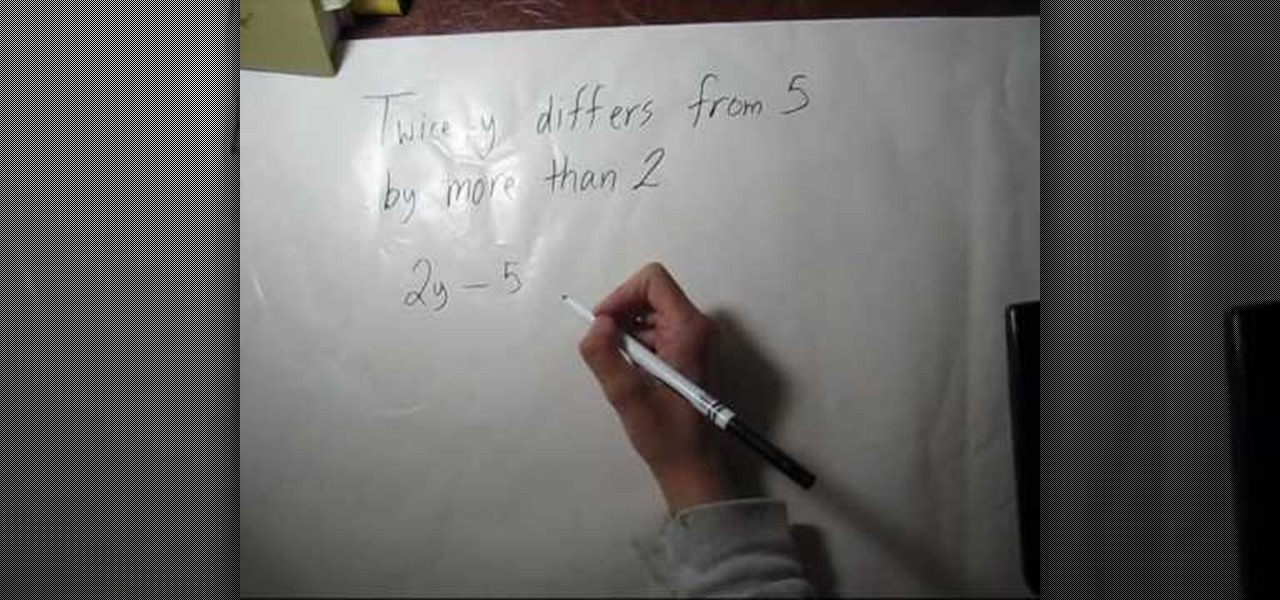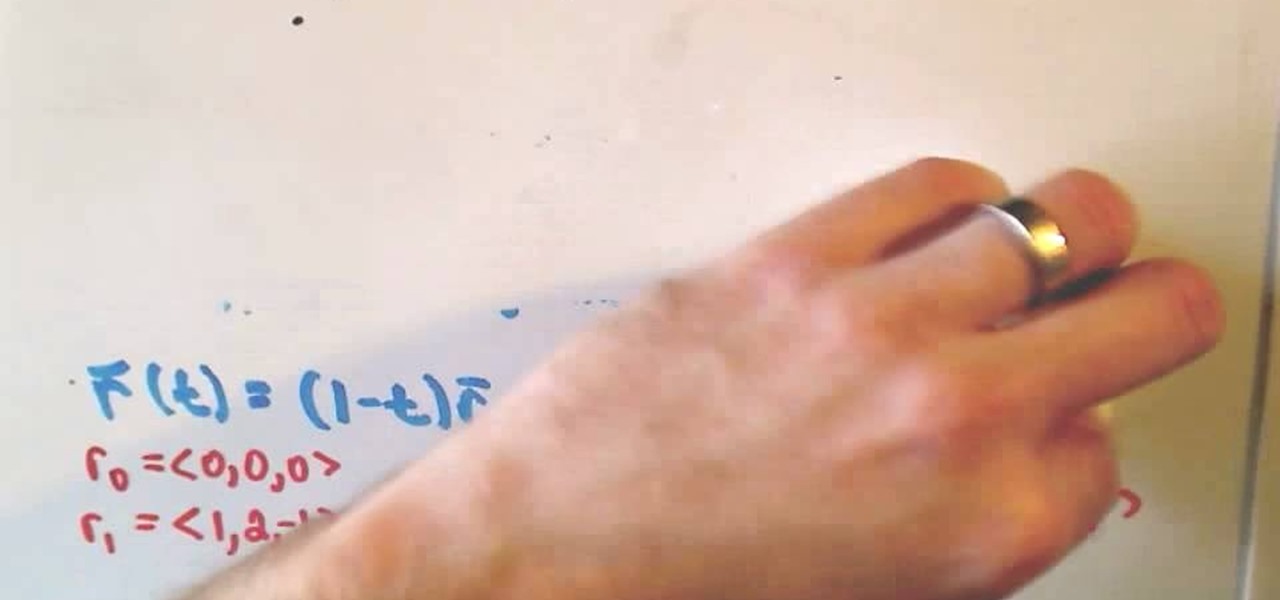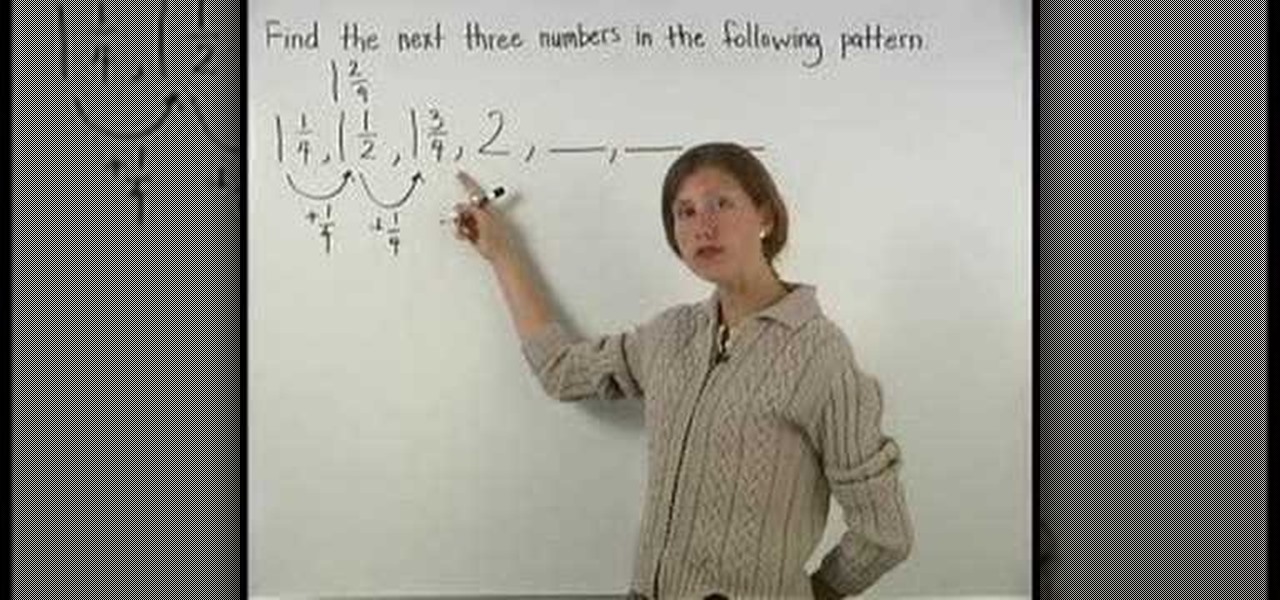Everything Else


How To: Subtract mixed numbers with borrowing
This video teaches you to subtract mixed numbers with borrowing. Consider 2 mixed numbers. For example 8 and 2/7 and the other 5 and 4/5.You have to subtract 5 and 4/5 from 8 and 2/7. First you have to convert the fractions to their common denominator. To equate the denominators of these two fractions you have to multiply the first denominator with the numerator and the denominator of the second fraction and also multiply the numerator and denominator of the first fraction with the denominato...
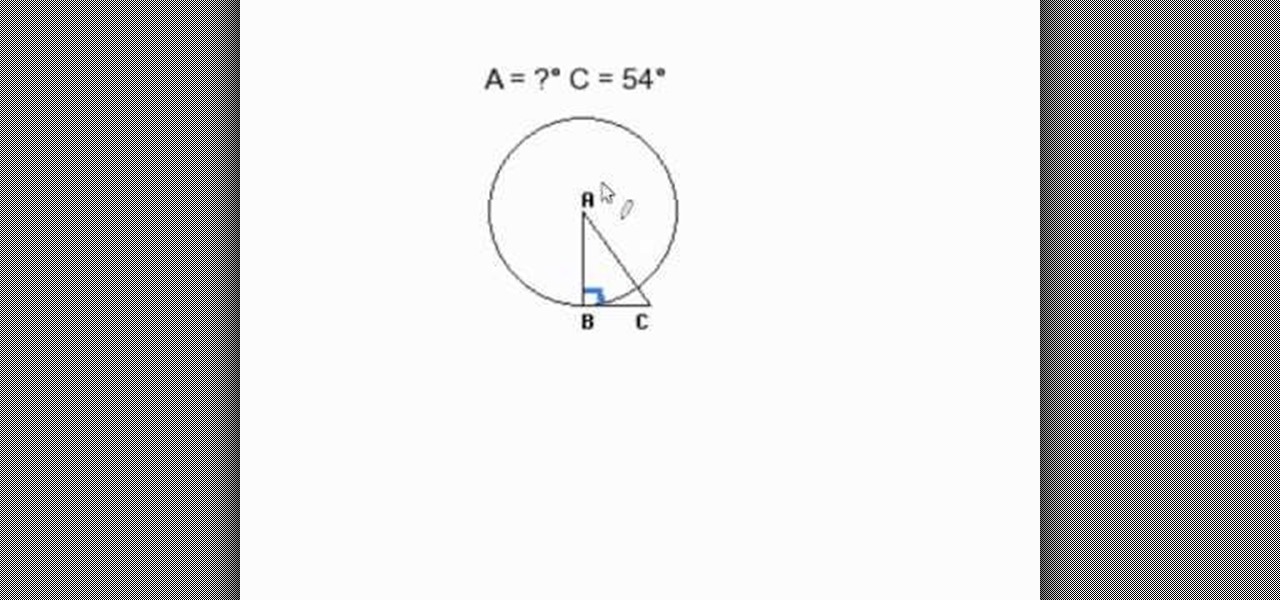
How To: Find a central angle with a radius and a tangent
mathproblemgenerator.com provides a video about how to find a central angle with a given radius and a tangent. The angle at the intersection of the radius and the tangent is equal to 90 degrees. The second angle is also given in the problem. So the central angle is equal to 180 minus (90 plus the other angle given). In the video, the given angle is 54 degrees, making the equation = 180 - (90 + 54). Therefore the central angle is equal to 36.
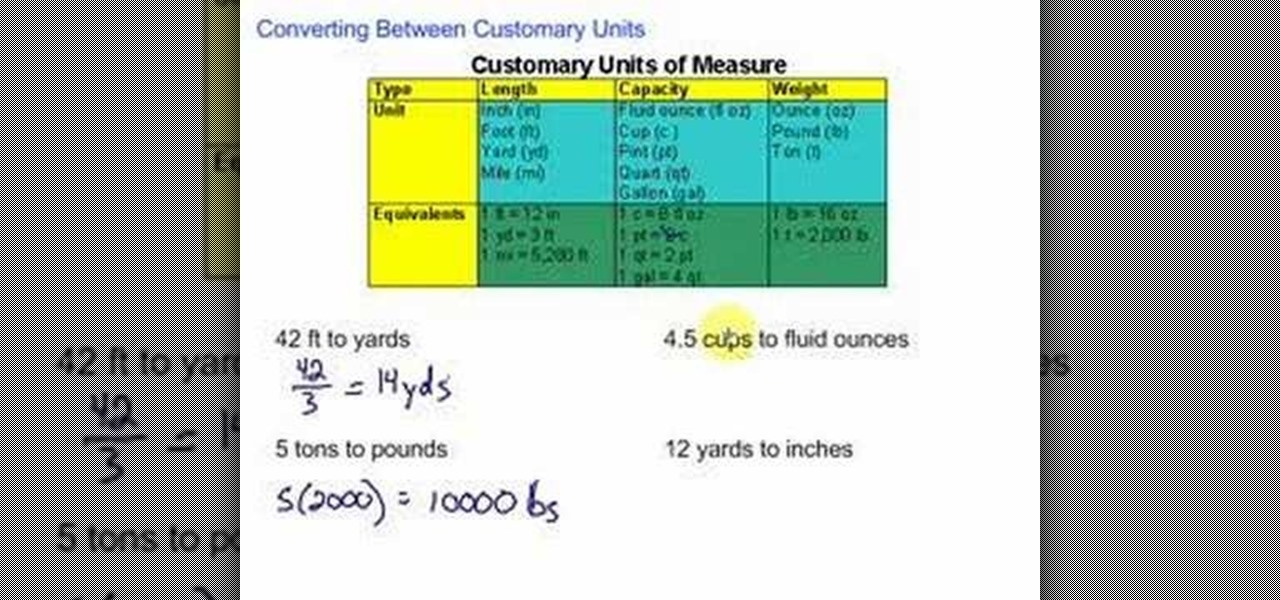
How To: Convert between customary units of measurement
In this video tutorial the author shows how to convert between customary units. He gives a chart which contain various convention tables showing the equivalents of various measurement units. He says a general rule that when converting a smaller unit to large unit we divide the numbers and when converting a larger unit to smaller unit we multiply the numbers. He takes a few examples and shows how to convert between various units like feet, yards, inches etc. This video shows how to convert bet...
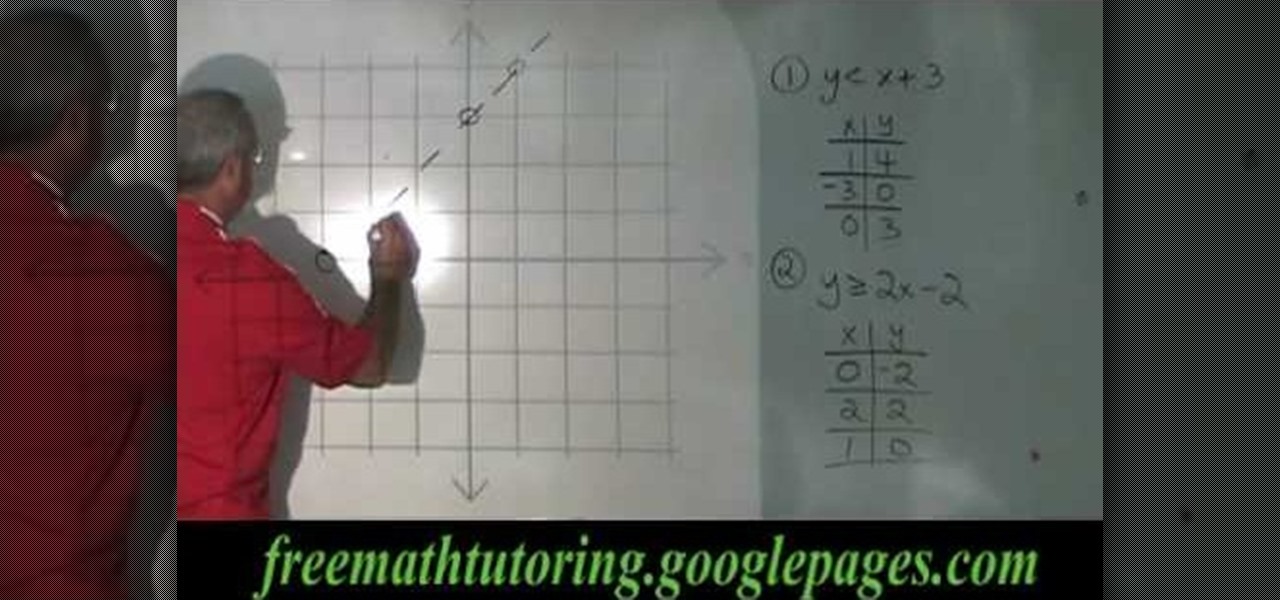
How To: Draw a dotted/solid line when graphing an inequality
In this video the tutor shows when to use a dotted line and when to use a solid line while graphing lines in coordinate geometry. He says that we should use a dotted line to plot an inequality which contains the symbols less than or greater than. He also says that we should use a straight line when plotting an inequality which contains the signs less than or equal to and greater than or equal to. He goes on and demonstrates this idea with some examples. This video shows how to use different l...
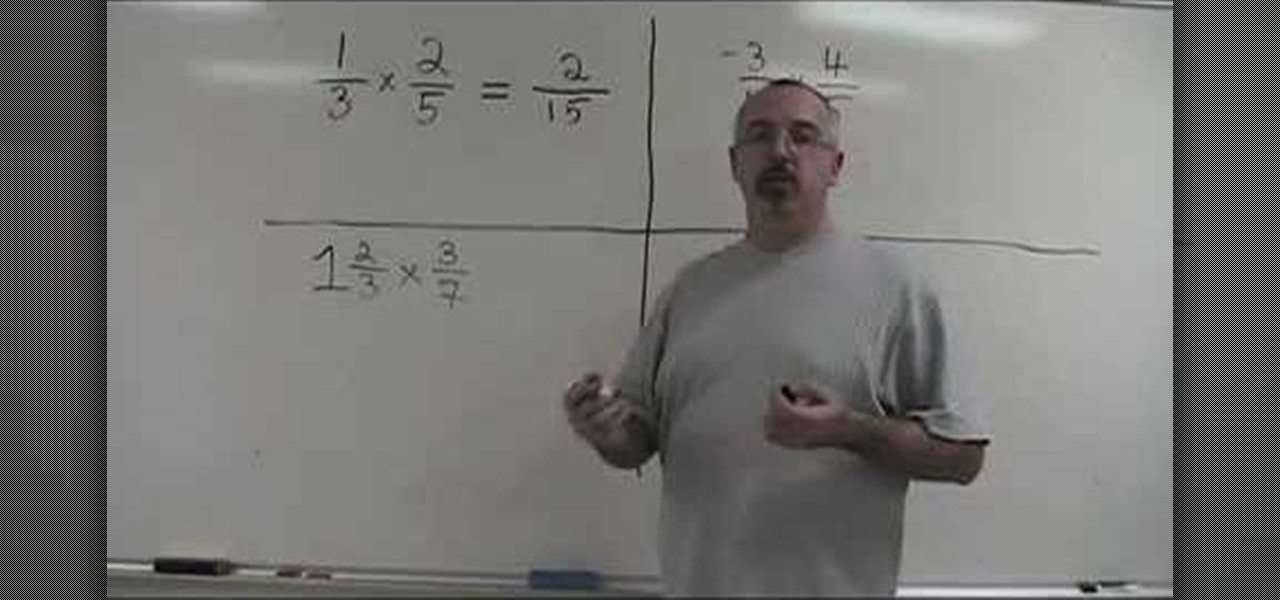
How To: Multiply fractions
Doug Simms gives a demonstration of multiplying fraction in a simple and easy manner. The simplest problems have proper fractions to be multiplied by proper fractions, and the answer can be arrived at by simply multiplying the numerator (upper value) of one fraction with the numerator of the other, carrying out the same operation with the denominators (lower values) of the two fractions, and finally, reducing the resultant fraction by a common factor, if any. Doug also gives three other examp...
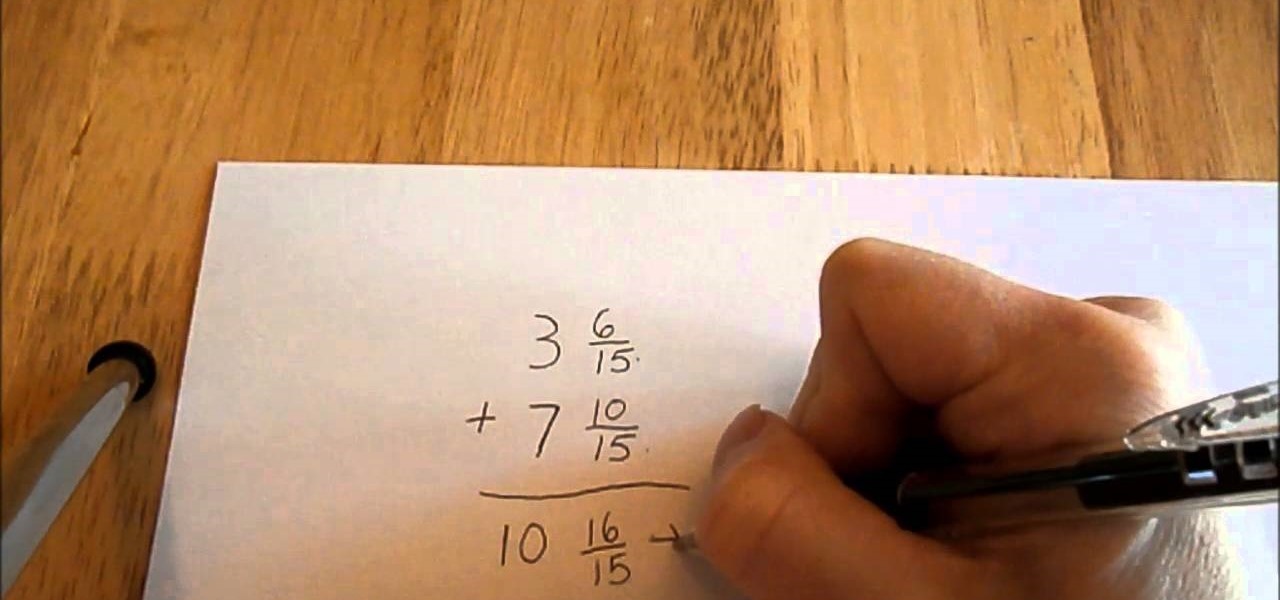
How To: Add Mixed Numbers Tutorial
This step by step video teaches how to add mixed numbers AKA mixed fractions easily!
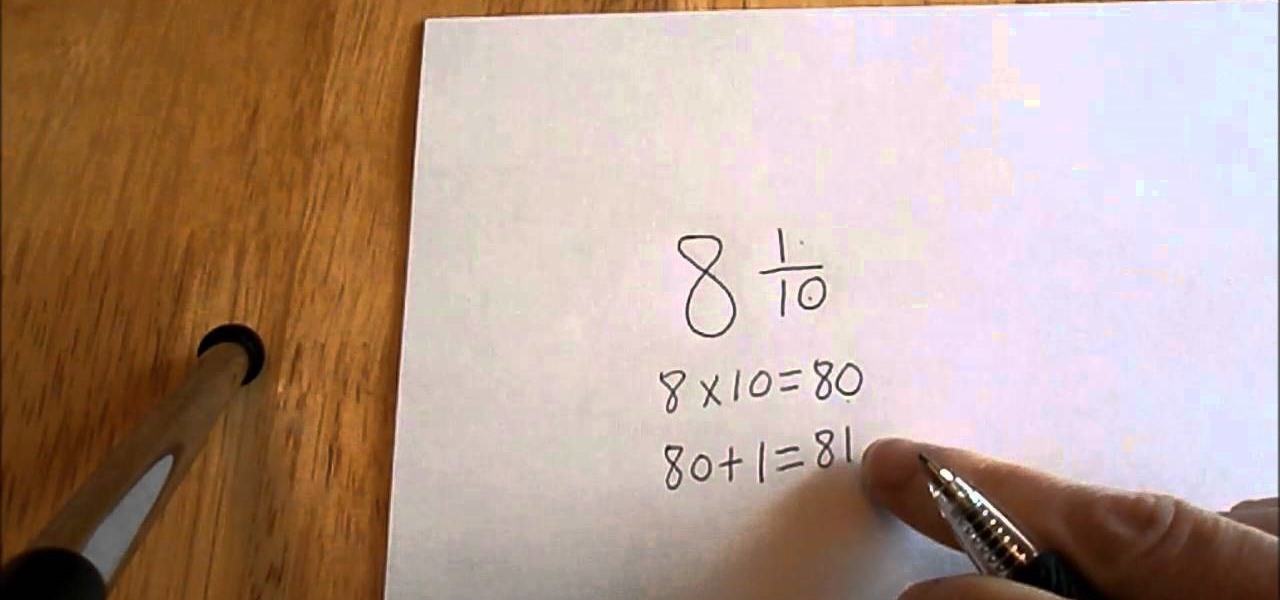
How To: Convert a Mixed Number to an Improper Fraction Tutorial
This easy tutorial will show you how to convert a mised number into an improper fraction in a few easy steps.
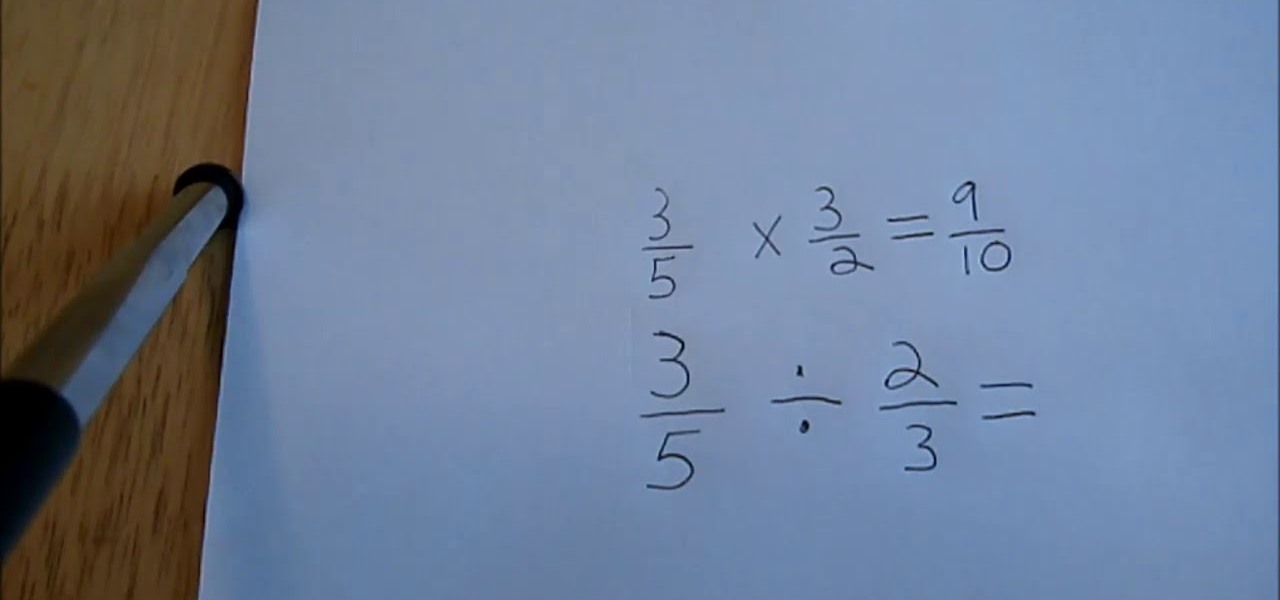
How To: Divide Fractions Tutorial
An easy step by step video tutorial on dividing fractions.
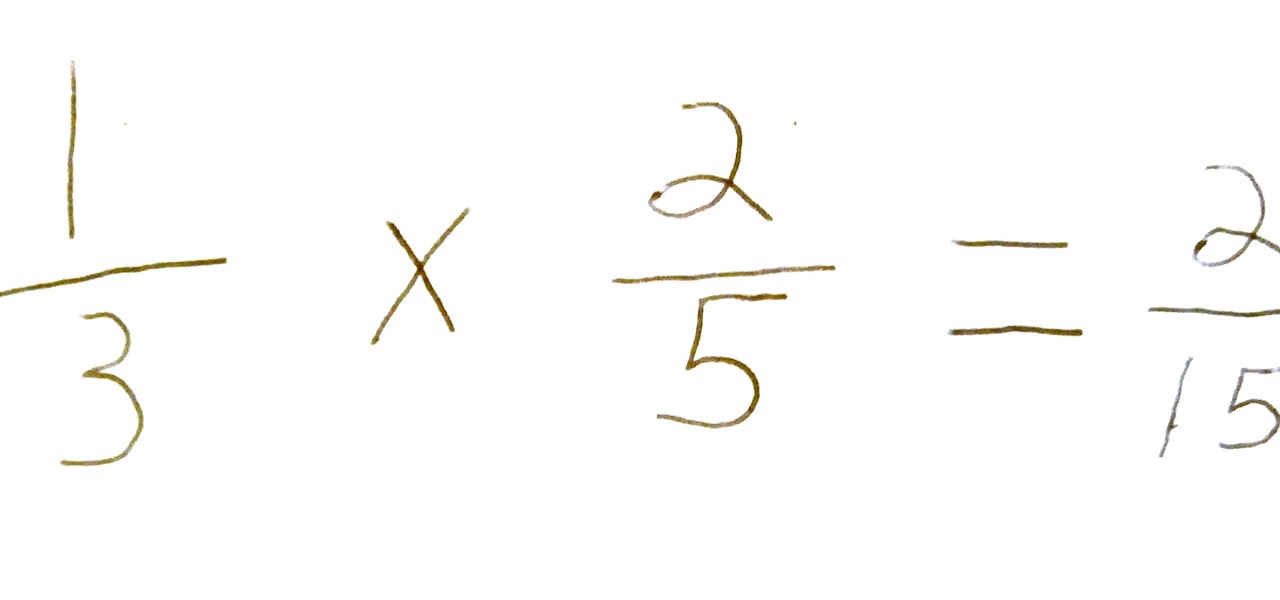
How To: Multiply Fractions Easy Tutorial
In this step by step video I'll show you how to multiply fractions.
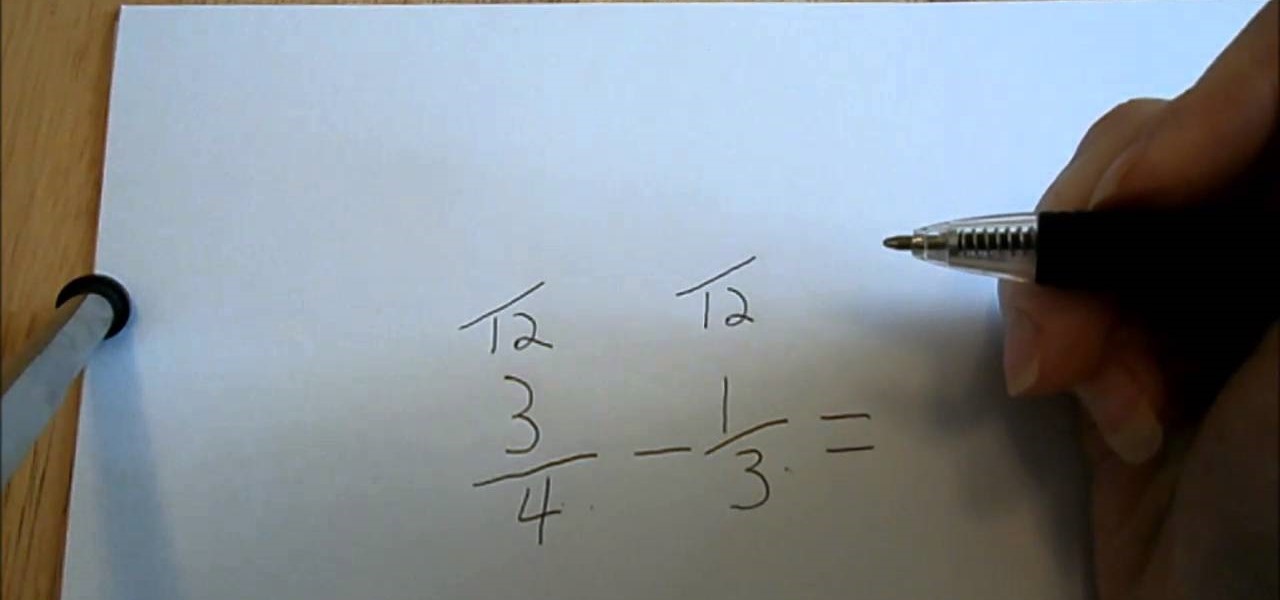
How To: Subtract Fractions with Unlike Denominators Step by Step
Learn how to subtract fractions with unlike denominators by watching this easy video tutorial.

How To: Subtract Fractions with Like Denominators
This easy video tutorial teaches how to subtract fractions with like denominators step by step.
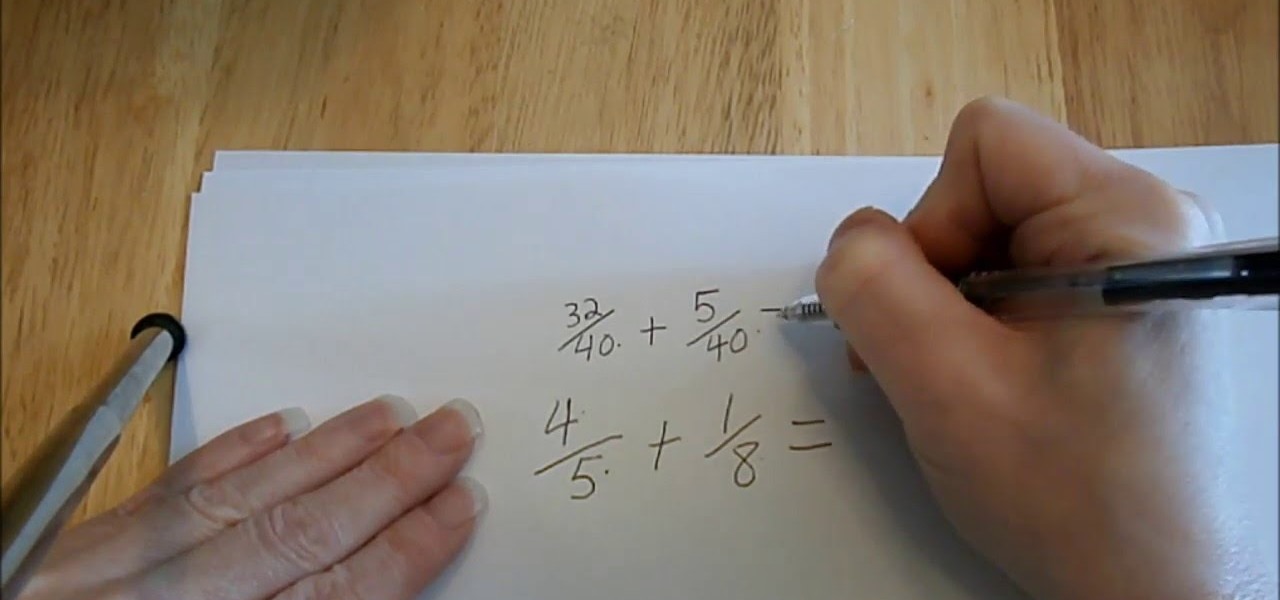
How To: Add Fractions with Unlike Denominators Tutorial
This video tutorial teaches you step by step how to add fractions with unlike denominators.
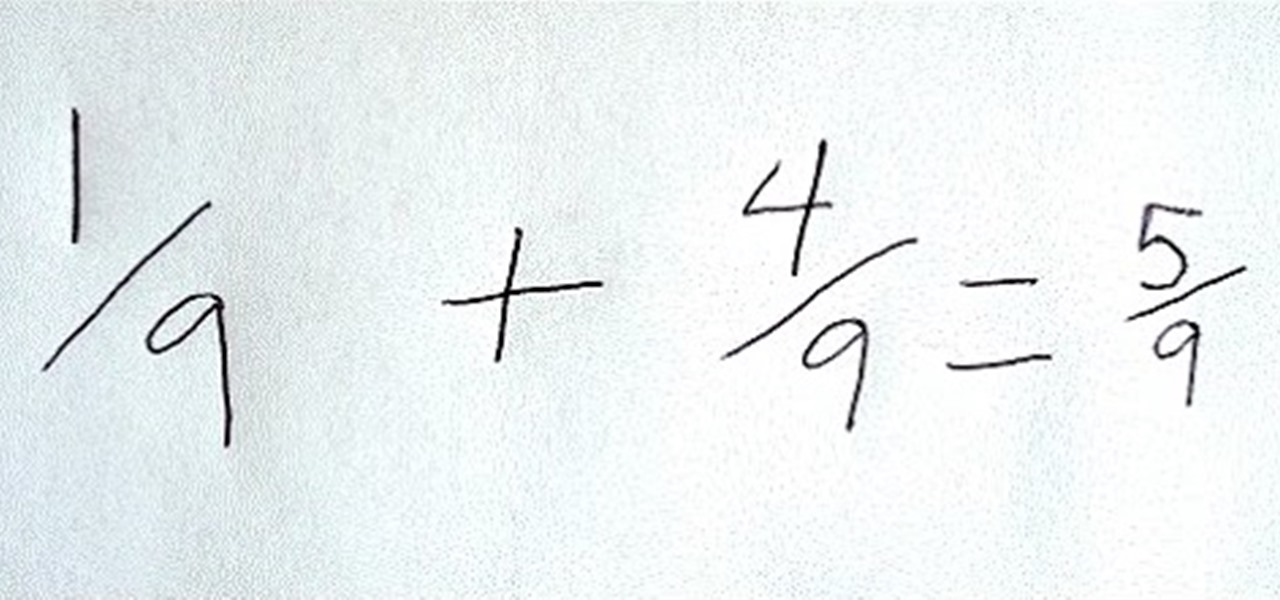
How To: Add Fractions Tutorial
Learn how to add fractions with this easy step by step video.

How To: Solve Word Problems Involving Volume of a Pyramid
Learn how to solve geometry word problems. For example, how would you solve the following problem?
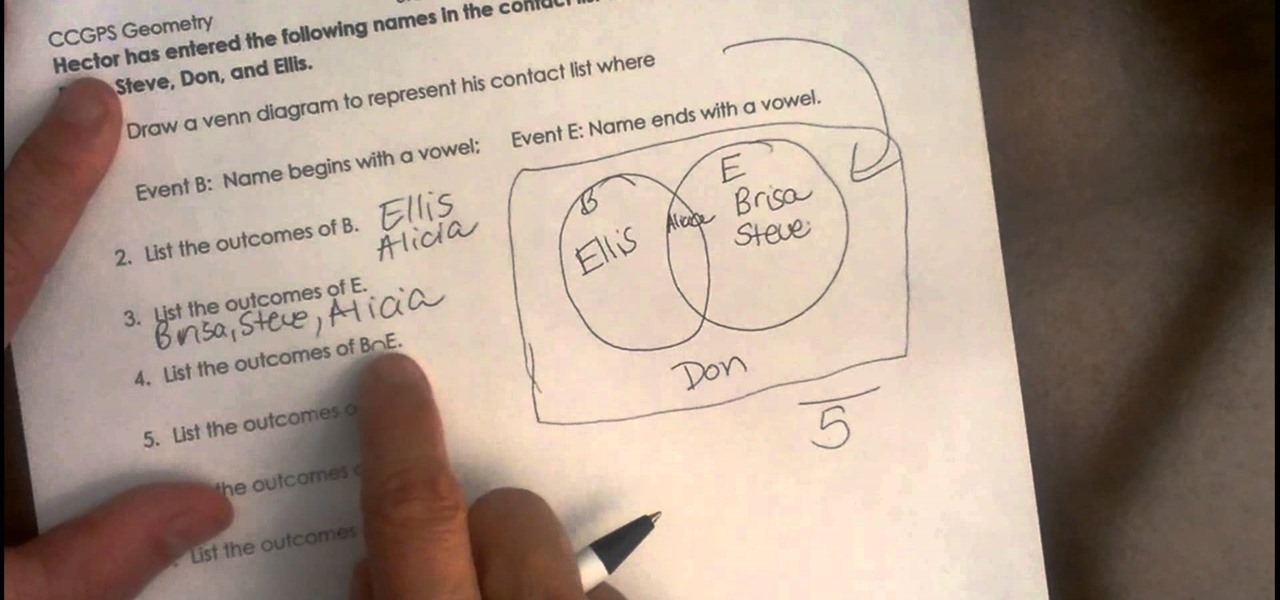
How To: Use a Venn Diagram to Solve Probability Problems
Video covering how to set up a Venn diagram. The video covers how to draw the diagram and then look at a set of data and place the data in the correct part of the Venn diagram. The sample problem is as follows.

How To: Find the Height of a Trapezoid.
Step by step directions for finding the height of a trapezoid. Video: .
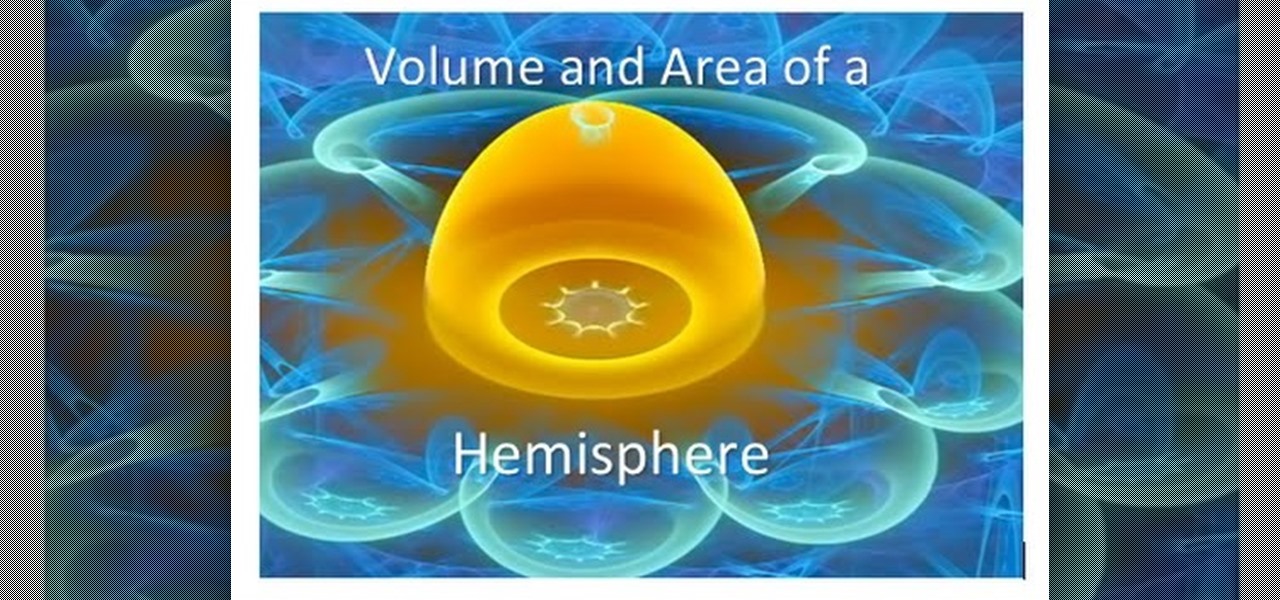
How To: Find the Area and Volume of a Hemisphere
A hemisphere is sphere that has been cut in half. When you cut the sphere in half you are left with the great circle, plus half of a sphere. This fact can be used to find the area, and the volume of a hemisphere. The video works several example problems in which the area and volume of a hemisphere is calculated.
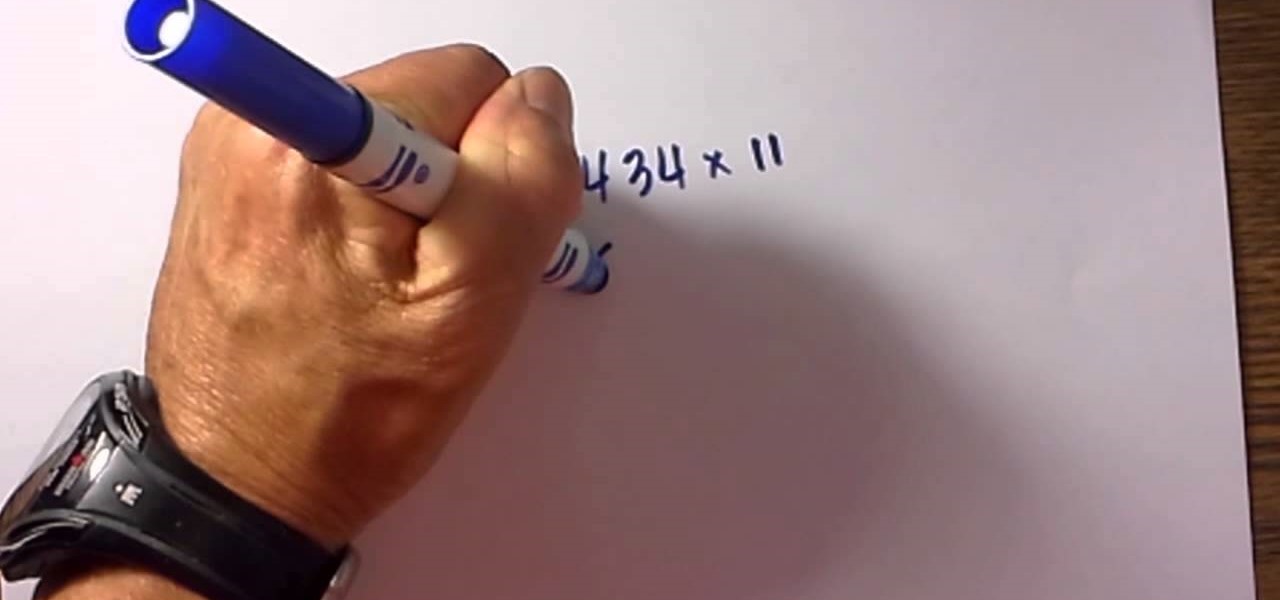
How To: Multiply by 11 Faster Than a Calculator
Yes, with this simple technique you can multiply 2 digit numbers in your head. The video also reviews a really easy method for multiplying larger numbers by 11 in a simple fashion.
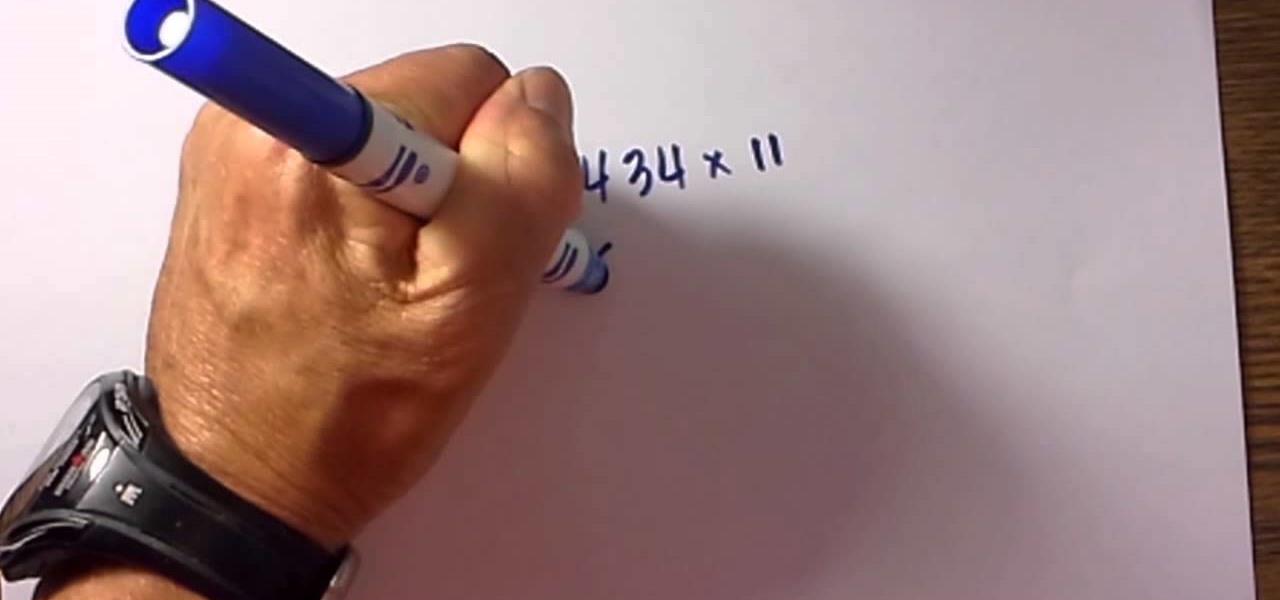
How To: Multiply Any Number by 11 Easily
This video shows two techniques for multiplying any number by 11. Using these techniques you will find it is easier than using a calculator.
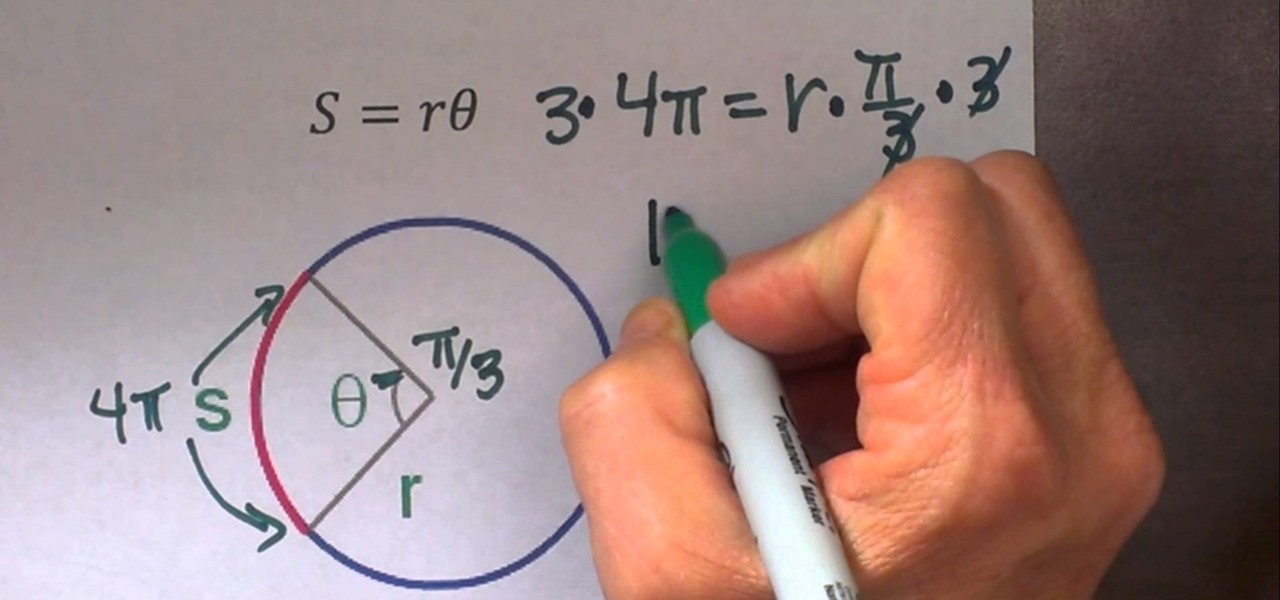
How To: Find the Radius of a Circle from Arc Length
The video provides two example problems for finding the radius of a circle given the arc length. Problem one finds the radius given radians, and the second problem uses degrees.

How To: Find the Surface Area of a Cylinder.
Step by step directions for finding the surface area of a cylinder. In order to calculate the surface area of the cylinder you find the area of the two bases and add this to the lateral area.
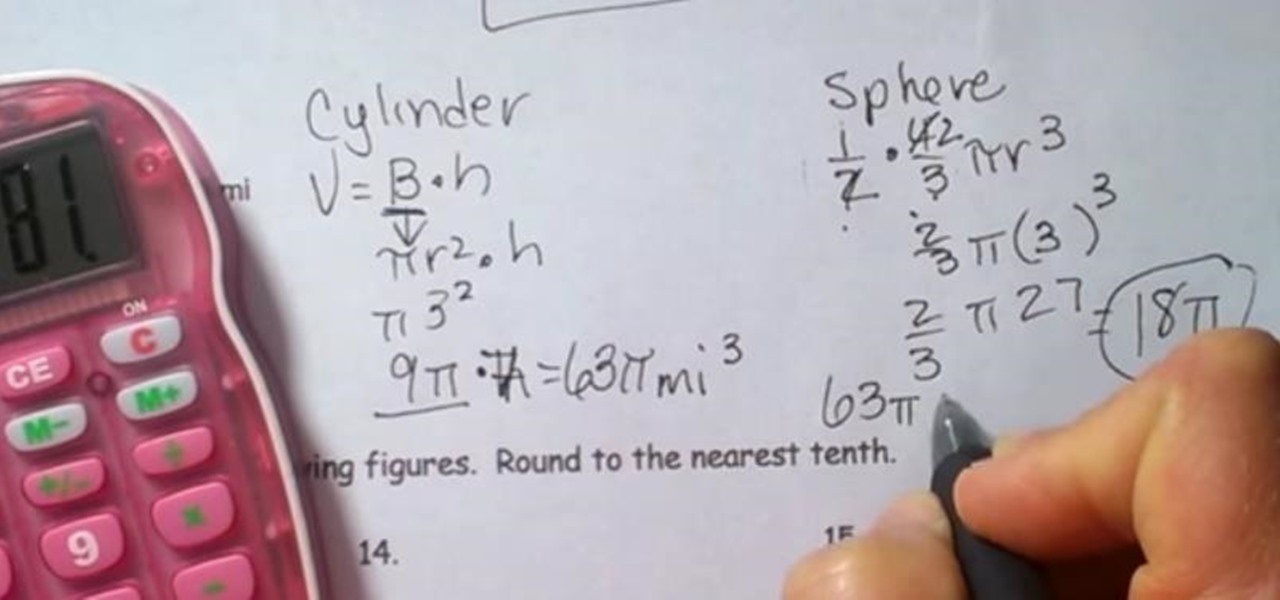
How To: Find the Volume of Composite Figures (Also Called Composite Shapes)
Composite figures are composed of several geometric shapes and are three-dimensional shapes. The first composite shape is a combination of a rectangular prism and a pyramid. To find the volume of the entire shape you find the volume of each individual shape and add them together. The second figure consists of a cylinder and a hemisphere. Check out the video below for the full lesson.
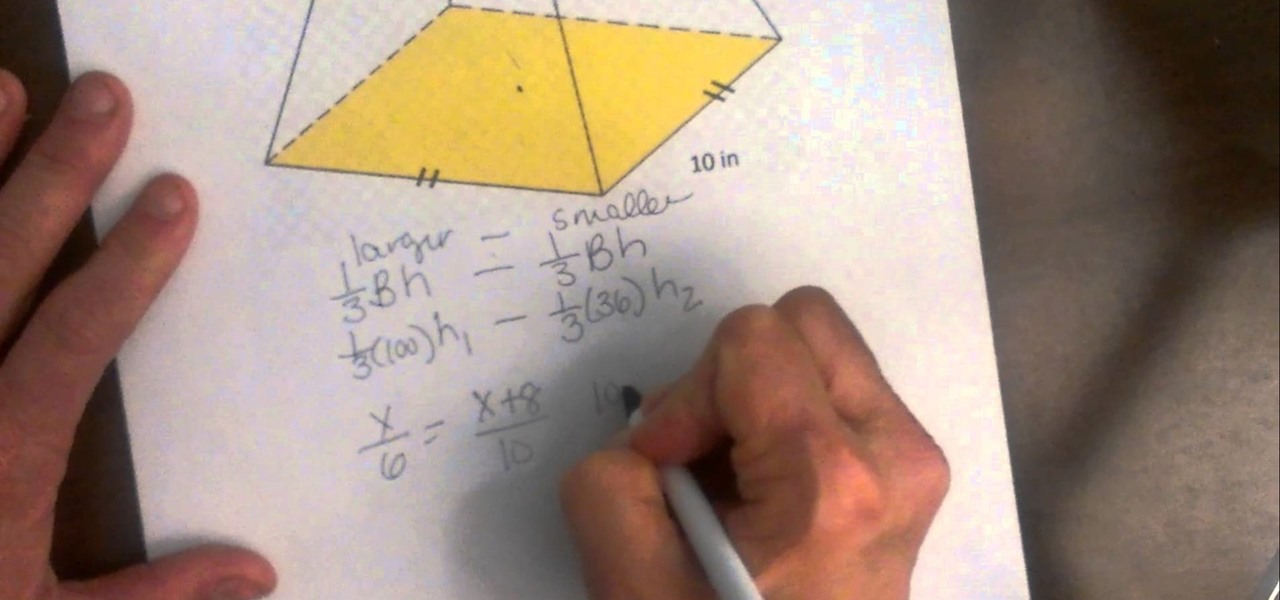
How To: Find the Volume of a Truncated Pyramid.
A truncated pyramid (frustum) is a pyramid with the top cut off. This video reviews how to find the volume.

How To: Classify a Triangle as an Isosceles Triangle.
Video: . What is an isosceles trapezoid. The video goes over the properties that are unique to an isosceles trapezoid.
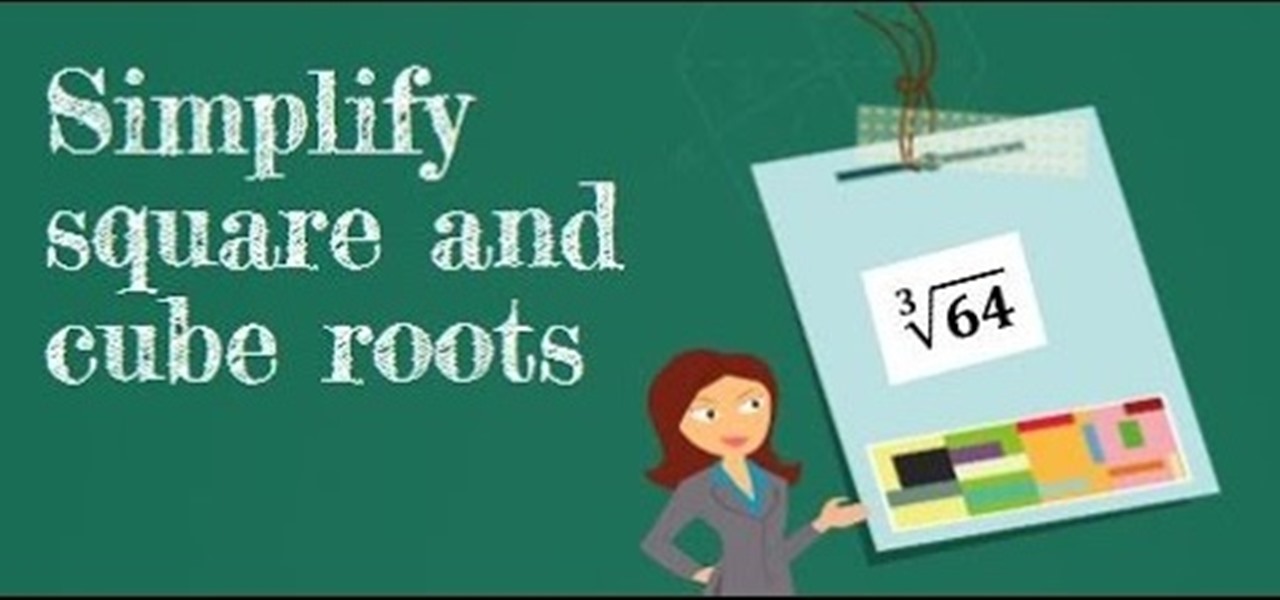
How To: Simplify Square and Cube Roots
Whenever you simplify a square root or a cube root you are writing them in the simplest form. This video teaches a factoring method.
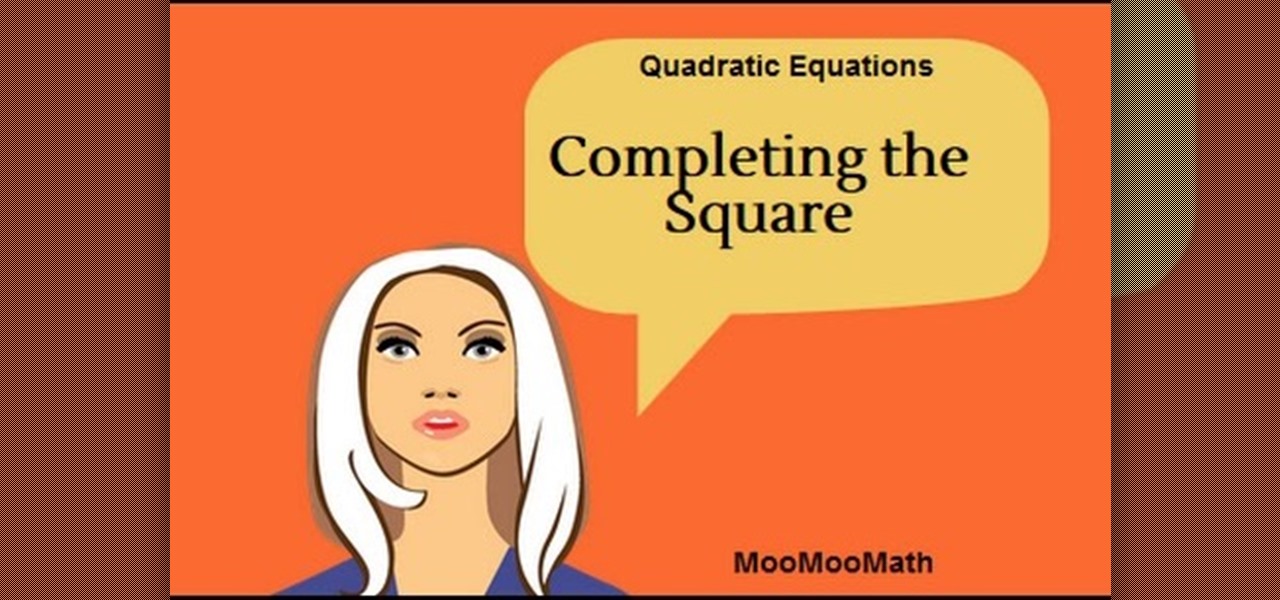
How To: Complete the Square of a Quadratic Function.
How to use "we half it,we square,we add it to both sides" when using the complete the square" This method can help make a complex Math problem a little bit easier.
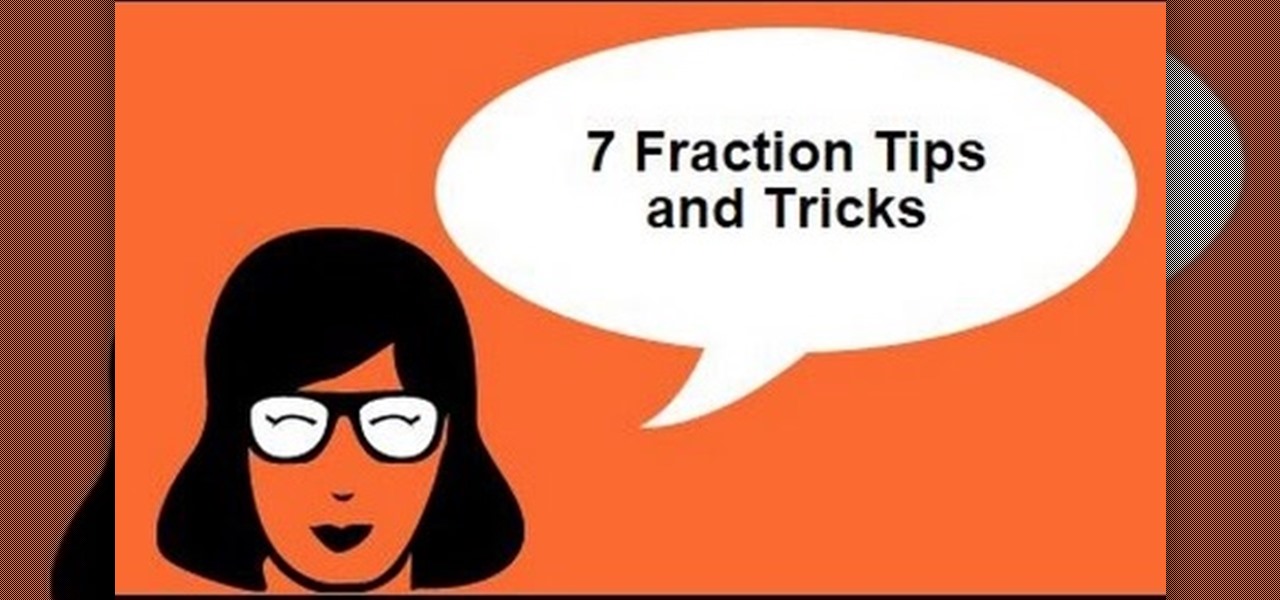
How To: Add Fractions Without a LCM
This video has 7 fraction hacks that can save you time when working with fractions. The hacks are: Adding fractions without a LCM
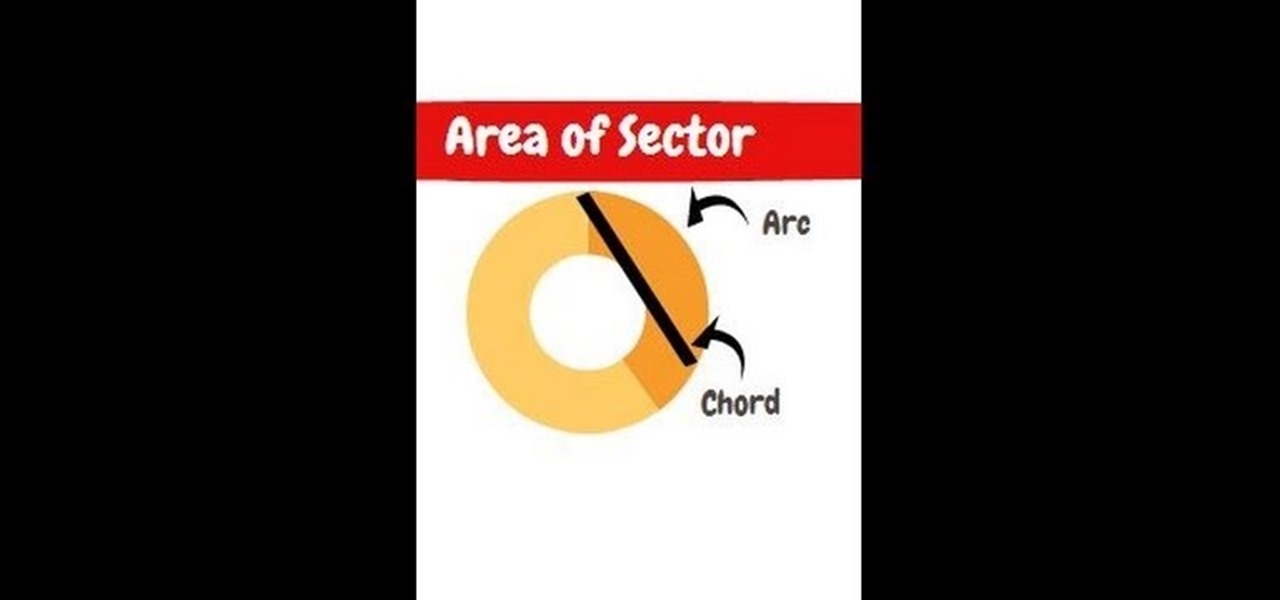
How To: Find the Sector Area
The sector area is a section of the circle. You can think of it as finding the area of a pizza slice instead of the entire pizza.

How To: Simplify Complex Fractions
The key to simplifying fractions is to convert the fraction from a hamburger to a hot dog. In other words you change it from a fraction to a division problem, and then use Keep,Change,Flip to simplify. The video explains all of this and helps make complex fractions,simple.

How To: Change a Quadratic from Vertex Form to Standard Form.
The Vertex Form of a Quadratic Equals Vertex Form = F(X) = a(X-H)^2 +K (H,K) = Vertex, and the standard form equals f(x) = ax^2 + bx + c. This video explains how you switch from the vertex form to the standard form.

How To: Find the Perimeter of a Rectangle
If you have a rectangle and the length of only one side is given,how do you find the perimeter. The video shows how the diagonal creates a right triangle. This right triangle can be used to find the other side of the triangle, and then the perimeter.

How To: Simplify Complex Fractions
Complex fractions are fractions that contain a fraction in the numerator,the denominator, or both. You can use the Keep,Change,Flip method in order to simply these complex fractions.
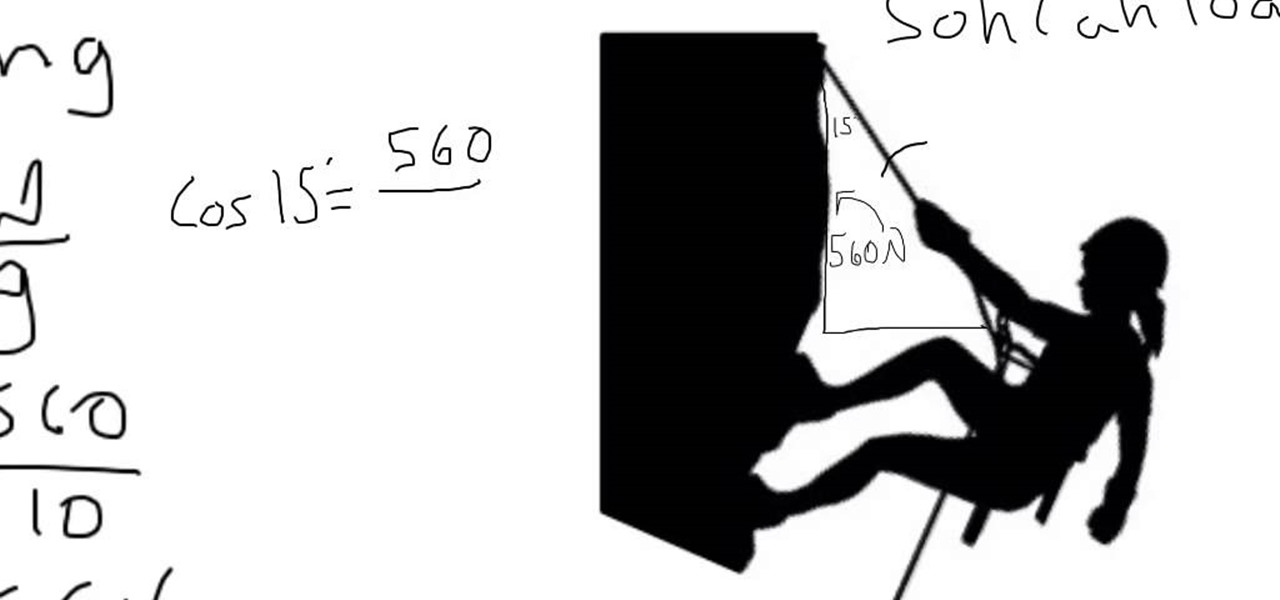
How To: Work a Tension Problem
In this video tutorial I will be explaining how to work a tension problem. Usually these problems are found during a Newtons laws unit in physics. I am currently in physics and I thought I might share my strategy and work to help you guys succeed in the problems. Thank You. The video was made with Explain Everything. Also, please check out my youtube channel. It is new and I pasted a link for you guys to check out. Like comment and subscribe!
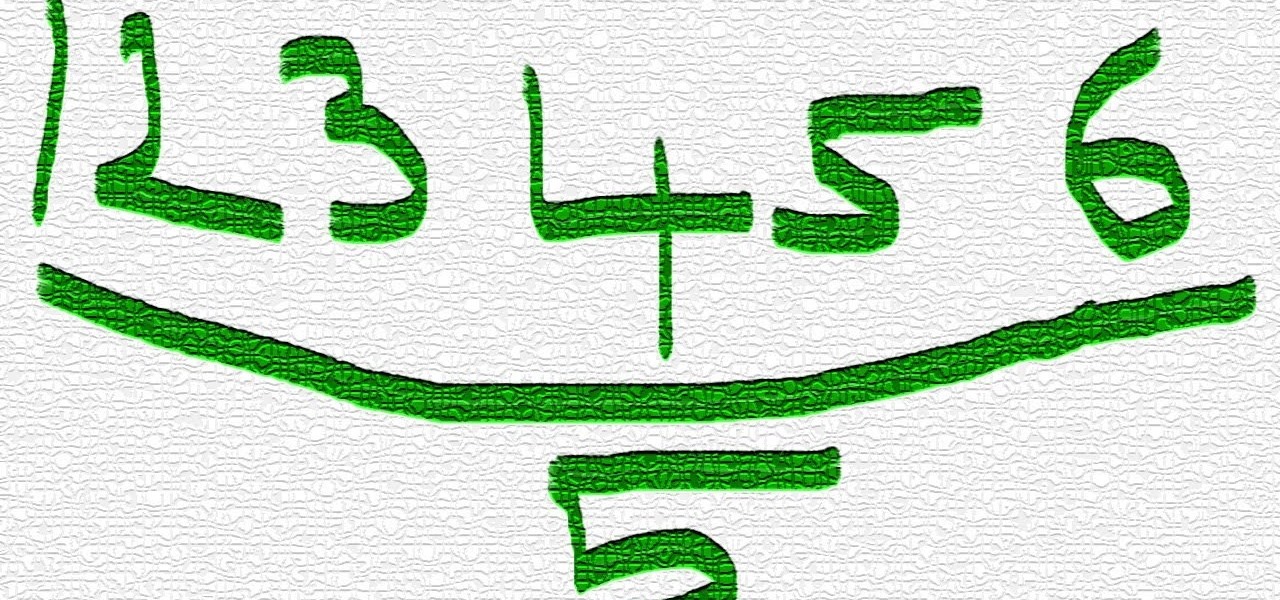
How To: Divide Any Number with 5 in Just a Few Seconds
Fast maths tricks!

How To: Spend Money on a Graphing Calculator? Nah—Just Use This Web-Based TI Emulator
For the majority of my math classes in middle and high school, a graphing calculator was a must. While the calculators were very useful to have, they were quite steep in the price column. After losing the TI-83 graphing calculator my parents bought me in high school, I had to save up my own money to buy the next one.
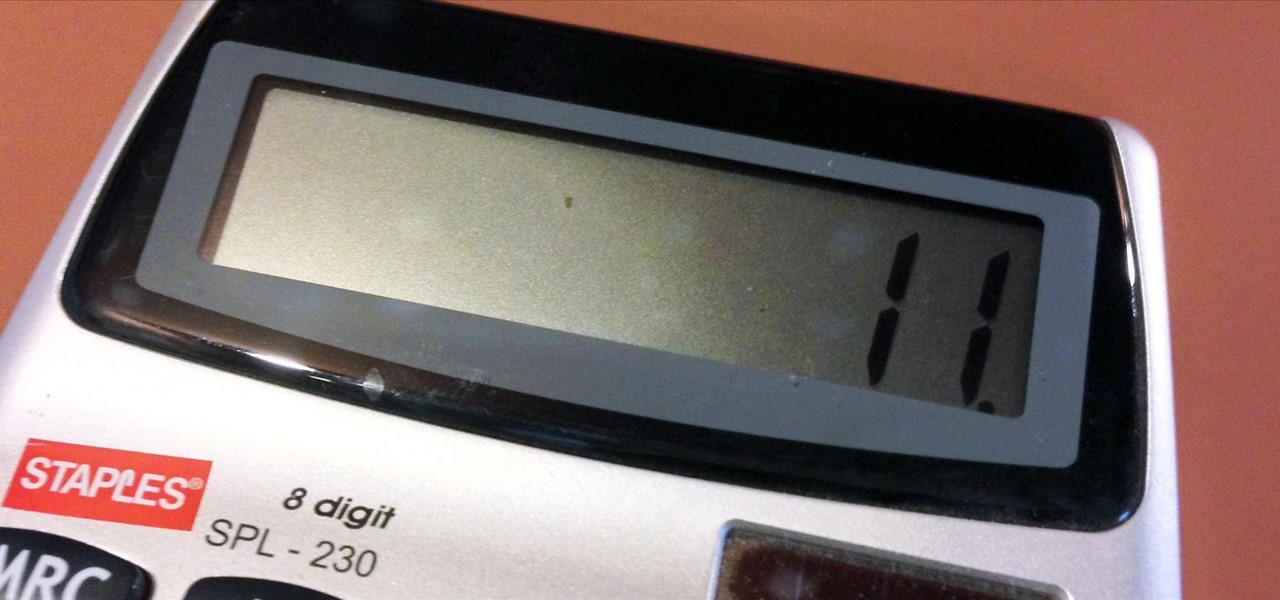
How To: Multiply Any Number by 11 with a Super Fast Mental Trick
Most of the time, when I’m bored during math class, I play with my calculator to satisfy my boredom. Recently, I've discovered that when multiplying any number by 11, 111, or any number similar to it, that it has a pattern (though I guess everything in math has a pattern). I don't know if this technique is original, because I didn't read anything about this. It's just mere observation. If it’s a tried and true technique, let me know.
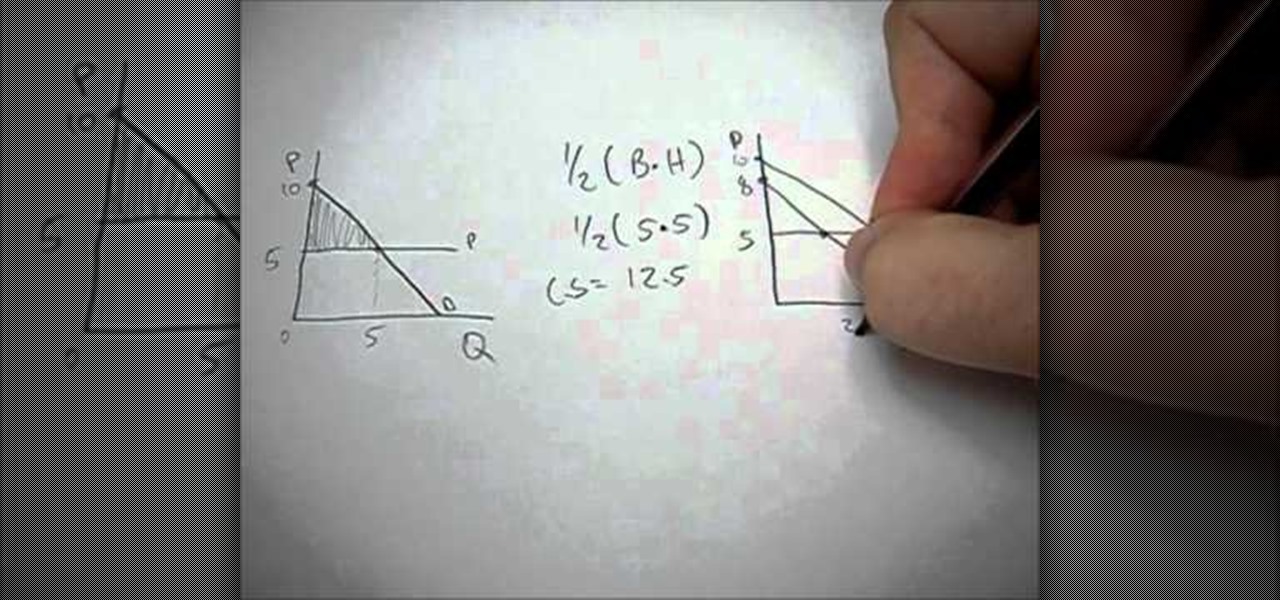
How To: Calculate Consumer Surplus with a few simple equations
Struggling to find and calculate the correct consumer surplus for an econ class or in any other situation? Take a look at this guide that will walk you through the different equations and graphs necesssary to understand and calculate consumer surplus.

How To: Use PEMDAS to evaluate an algebraic expression
Algebra is not as hard as it looks. Learn how to evaluate expressions correctly by using the order of operations, which can easily be remembered as PEMDAS- Parentheses, Exponents, Multiplication, Division, Addition, Subtraction. You can solve any problem in algebra with this approach.

How To: How Round Is Your Circle? Engineering Puzzles Explained
Can you dissect an equilateral triangle into pieces that can be rearranged into a square? If you think you can, you may have mastered the Pythagorean theorem.
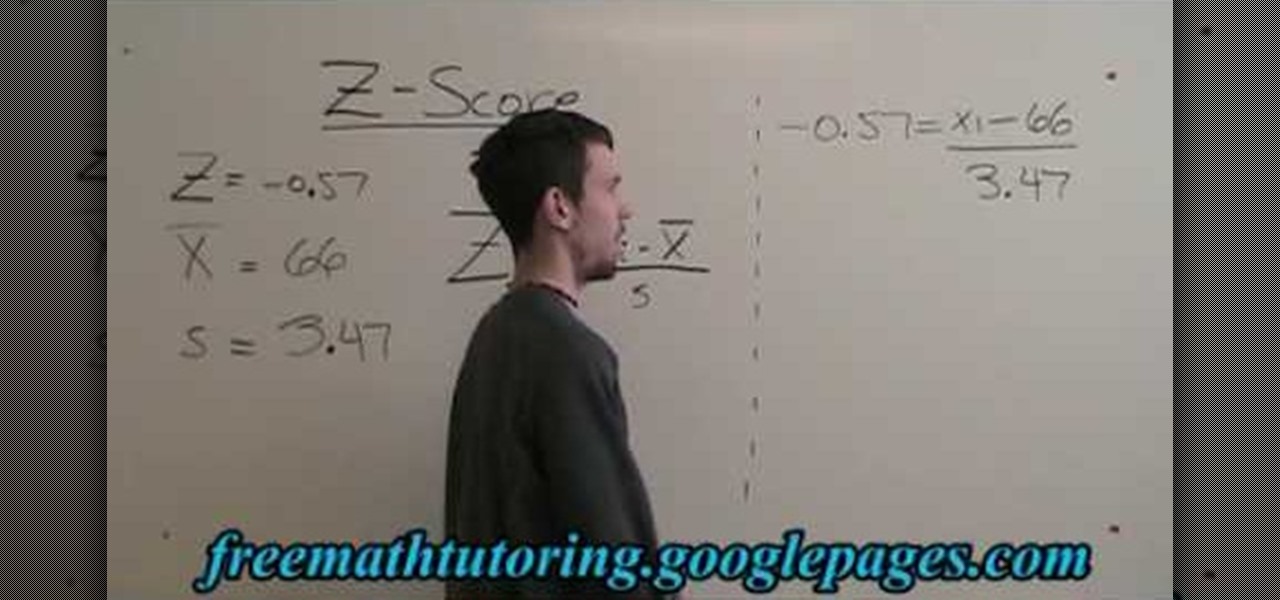
How To: Find a data point (Xi) with the Z-Score formula
In this free video math tutorial, we learn how to use the Z-Score formula to find a data point (Xi) in statistics. With mathematics, as with anything else, not everyone progresses at the same rate. Stats is no exception. Happily, in the age of Internet video tutorials, this isn't a problem. Those who progress quickly can go beyond what's being taught them and those who are struggling likewise have all the time in the world to catch up. Whether you need help finishing your homework or studying...




